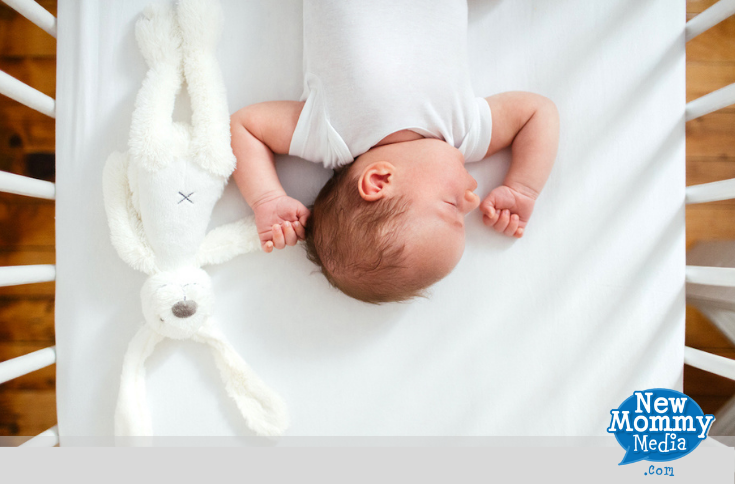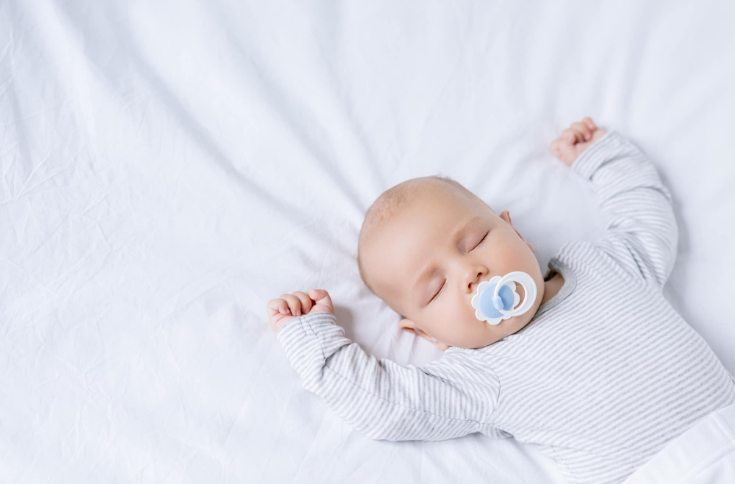How to Choose Between a Bassinet and a Crib
In this article:
- How does the space in your home impact your decision?
- What features are available in both options?
- The importance of pricing and lifetime use.
- General safety tips to help your baby sleep well.

As first-time moms, we tend to get overwhelmed with choosing what to buy for our babies, so we usually end up buying almost everything! Sometimes we're just a bit naive, while other times it's precautionary – we’d rather have it and not need it than need it and not have it. As we mature on our journey through motherhood, we learn the subtle difference between must-haves, nice-to-haves, and simply cute. There are still, however, a few grey areas with some baby items. The choice between a bassinet and crib is one such area for some moms.
A bassinet is a small bed specifically made for infants for their first few months of life. Most bassinets are portable with a wheeled or rocking base, but some also come with stationary legs. A crib is a more long-term solution for babies and can be used from day one. Most cribs are larger than bassinets and not portable. Both bassinets and cribs have their pros and cons and are both safe sleeping options once guidelines are adhered to. Here are a few points to consider to help you decide between a bassinet and crib.
Living Space
Choosing where your baby sleeps is a serious decision, especially since newborns sleep most of the day. If you’re living in a small space, most cribs are large and take up a ton of space, so a bassinet may be more suitable for you. However, bear in mind that bassinets have weight limits, so your baby would eventually need to transition out of it after a couple of months.
Features and Functions
TIP: Looking for a foldable, lightweight bassinet that's great for travel? Regalo Baby specializes in baby safety products from the newborn stage through the toddler years. Visit this link and get 25% off plus FREE shipping. Use our special promo code, MOMMY.
A crib tends to have less functionality than a bassinet. For the most part, the crib bed base can be raised or lowered, with some degree of manual labor. Some cribs have the functionality of lowering the sidebars instead of raising the bed base. Generally, a crib still has higher sides than a bassinet, which doesn’t make it as easy to use. When bending over to lower your baby or picking them up, it may be hard with the higher sides of a crib, especially if you’re recovering from a difficult delivery or C-Section surgery. A bassinet has lower sides, which makes bending over a little easier. One great feature for most bassinets is that they are portable and can easily move from room to room without hassle. Some bassinets like the Regalo My Crib Portable Infant Bassinet, have upped the playing field and are foldable, lightweight and can be packed away neatly. This makes them ideal for around the home, grandma’s house or for travel.
Family Budget
An important factor to consider when choosing between a bassinet and a crib is your budget. Cribs are long-term investments and are usually more expensive than bassinets. Some cribs can grow with your child and convert to toddler beds when they’re older, so they have a longer lifespan than bassinets. However, if you’re on a tight budget or can’t make the investment right away for a crib – but maybe later – a bassinet is a good short-term solution. It’s also good to know that there are small, less expensive cribs available that have some features you’d enjoy from a bassinet, such as portability. So that’s another viable option that’s not as short-term as a bassinet and not as expensive as a full-sized crib.
Personal Preference
Ultimately, the choice between a bassinet and a crib will come down to what works best for you, your baby, your family, and your peace of mind. Some moms decide between the two options based on the aesthetics of their home and the feng shui they envision. Some moms simply don’t like how tiny and uncomfortable their newborn looks in a giant crib all by themselves, so opt for the cozier option of the bassinet. For moms who’ve experienced infant loss, having their baby very close to them and easily accessible is vital. So they may prefer a bassinet.
In any case, it may not necessarily be a choice between one or the other, since your baby will eventually outgrow the bassinet. It may simply come down to a decision on whether to add the bassinet to the shopping list at all and when to invest in a more long-term solution, like a crib.
Safety Tips
Whether you decide to start off with a bassinet or a crib for your baby, here are a few things to bear in mind as you create a safe sleeping space for him or her. It’s recommended that newborns sleep in the same room as their parents for the first few months, but in a separate sleeping space. So closer is better, but take it a step further to ensure that your baby’s bed is safe with these safety tips.
- Your baby’s mattress should be flat, firm, and without pillows and blankets to reduce the risk of suffocation.
- There shouldn’t be more than two fingers’ width of space from the mattress to the edge of the bed.
- If the bed has slats, your baby’s head shouldn’t be able to fit between them (ie. no more than 2 3/8 inches apart)
- Ensure that there are no hanging cords or curtains by your baby’s bed that could pose strangulation hazards.
- Avoid extra padding and sleep positioners.
If you purchase a used crib, check for damage that may lead to breakage. Also, ensure that the bed conforms to the safety standards of the Consumer Product Safety Commission. Check the condition of the bed before you use it, even if it’s new. Make sure that you assemble it properly and adhere closely to the instructions and ensure that all hardware is tightened.
Shopping for a baby can feel like a lot, but this article should’ve given you insight into the pros and cons of purchasing a bassinet versus a crib. Hopefully, you now have one less thing to worry about so you can get back to what really matters in life: your little one!
